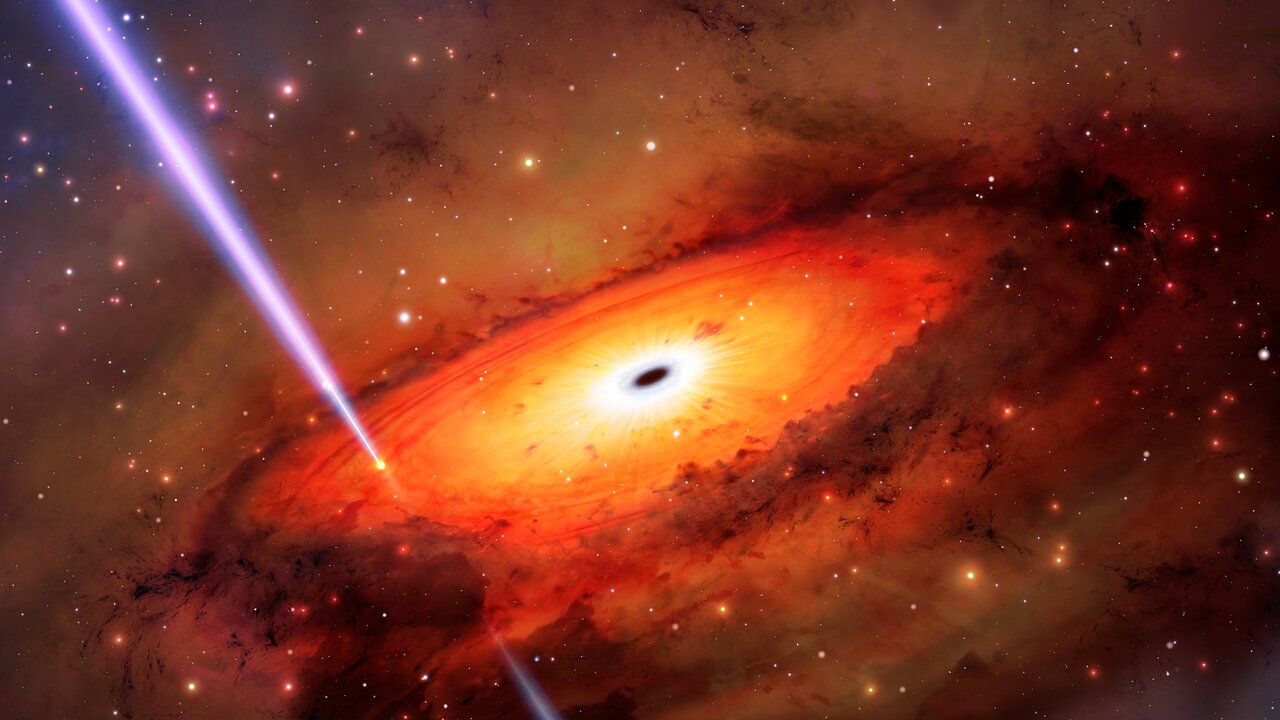NOIRLab Science Release | Gemini | 2023 Jun 22
International Gemini Observatory traces gamma-ray burst to nucleus of ancient galaxy, suggesting stars can undergo demolition-derby-like collisions
Astronomers studying a powerful gamma-ray burst (GRB) with the Gemini South telescope, operated by NSF’s NOIRLab, may have detected a never-before-seen way to destroy a star. Unlike most GRBs, which are caused by exploding massive stars or the chance mergers of neutron stars, astronomers have concluded that this GRB came instead from the collision of stars or stellar remnants in the jam-packed environment surrounding a supermassive black hole at the core of an ancient galaxy.
Most stars in the Universe die in predictable ways, depending on their mass. Relatively low-mass stars like our Sun slough off their outer layers in old age and eventually fade to become white dwarf stars. More massive stars burn brighter and die sooner in cataclysmic supernova explosions, creating ultradense objects like neutron stars and black holes. If two such stellar remnants form a binary system, they also can eventually collide. New research, however, points to a long-hypothesized, but never-before-seen, fourth option.
While searching for the origins of a long-duration gamma-ray burst (GRB), astronomers using the Gemini South telescope in Chile, part of the International Gemini Observatory operated by NSF’s NOIRLab, and other telescopes, have uncovered evidence of a demolition-derby-like collision of stars or stellar remnants in the chaotic and densely packed region near an ancient galaxy’s supermassive black hole. ...
Stellar demolition derby births powerful gamma-ray burst
Northwestern University | 2023 Jun 22
A long-duration gamma-ray burst of dynamical origin
from the nucleus of an ancient galaxy ~ Andrew J. Levan et al
- Nature Astronomy (online 22 Jun 2023) DOI: 10.1038/s41550-023-01998-8
- arXiv > astro-ph > arXiv:2303.12912 > 22 Mar 2023
